There is a lot of nomenclatures that is thrown around the survival community and sometimes it can be downright confusing. Among these are the names given to different types of packs. Such as EDC, 72 Hour Bag, Go Bag, Bug Out Bag or I.N.C.H.
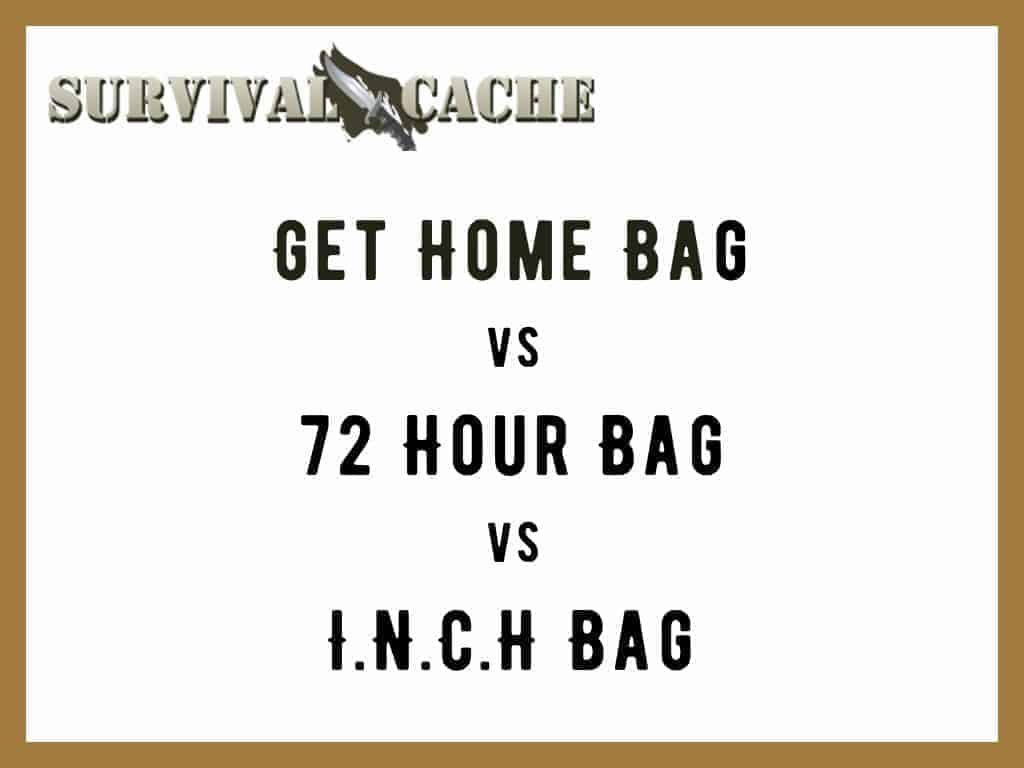
Sometimes these names get tossed around interchangeably and while they do share some qualities, there are some very important differences worth mentioning. Such as the size of the bag, weight, supplies inside and the purposed of that particular bag. So, grab a cup of coffee and sit back while I wade through the muddy waters of all this lingo. Please keep in mind that the following items I talk about are in part, suggestions. They are how I think of these bags and what work for me and I wanted to share that information. Remember to always personalize your gear and do what is best for you, your skill level and your needs.
But before I get into the specifics of each bag let’s go over a quick definition of each of them, the time frame they serve and one glaring environmental difference that doesn’t get talked about much.
SKIP AHEAD
The Bags
Get Home Bag
Sometimes referred to as an EDC bag, this is one that you carry with you every single day. It doesn’t have to be carried on your person, but it should always be easily accessible, such as in your vehicle. Generally speaking, its contents are only meant to serve for a short time period. An example would be getting you from home to work
Check out our expert discussion on how to put together a get home bag.
72 Hour Bag
This bag is referred to by many names. Including, BOB (Bug Out Bag), Go Bag, Get Out Of Dodge, and many others. This is what I call a middle ground bag. It is meant to serve longer than a Get Home Bag but not necessarily as long as an I.N.C.H bag. As the name suggests, it should have enough supplies to cover a minimum of three days but possibly longer.
I.N.C.H Bag
Stands for I’m Never Coming Home. Don’t let the name scare you but rather help shift your thinking about the items you put inside. This bag is meant for the long haul and what gear it carries, is what you have to survive off of indefinitely.
Bag Based On Your Survival Situations
As I said earlier there can be a glaring difference between the bags, items inside and the duration they serve based on the environment you operate in.
For example, most people live in or around urban areas. This is why a Get Home Bag is often talked about for short term use. Even in adverse conditions most of us would certainly be able to get from work to home within a day, maybe two.
But what if your job takes you 100 miles from home, 300 miles? What if you operate in a region where there are vast distances of wilderness between you and home, like Alaska?So, remember that the following bags and their contents are guidelines and what works for me. Analyze your situation and adjust the bags purpose and contents accordingly to fit your needs.
Also, always keep in mind to design a bag with ultralight gear since you do not want to be caught carrying something too heavy for prolonged periods of time.
Get Home Bag Review

The point of this bag is to help in getting you from point A to B. Generally, the distance between the two is relatively short. More importantly, it is getting you to a place where there should be more extensive supplies.Again, an example would be getting from work to home.
The bag can be as small as a fanny pack or as large as a school backpack. It all depends on the tools inside, your skill level and the distance that needs to be covered. For my purposes, I keep this bag lightweight so that I can move quickly and efficiently. Here are some of the items that I have carried in my Get Home Bag
- Flashlight. Seeing that I operate in more of an urban environment, I prefer a battery-powered flashlight for this loadout. I have had my share of navigating through buildings during power outages and it is not fun.
- Water Bottle
- Lighter
- First aid kit
- Cordage. Is always useful.
- Map
- Writing utensils and paper. Never know when you might need to leave a note or a warning.
- Food or snacks. Even though this is a short-term pack, keeping energy and morale levels up is always important. I prefer items like jerky, energy/protein bars or homemade trail mixes.
- Multi-tool
- Pocket knife
- Personal protection device. I will leave this open-ended as it is a very personal choice.
- Any other items that you may require such as medications.
BOB/72 Hour Bag Review
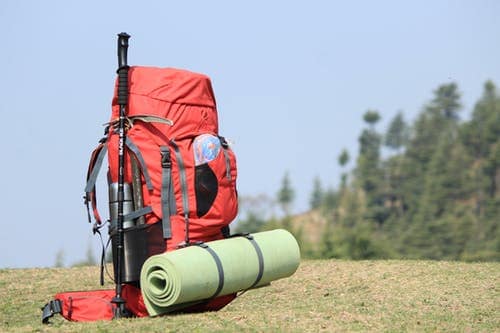
This bag is intended for getting me to my next destination. This could be a cabin in the woods, a family members house or some other location that works for me. The location should have long term suppliesand will serve as where I will ride out the storm.
The distance between you and that location will vary greatly from person to person. It could be 10 miles, or it could be several hundred miles. Either way the contents of the bag should reflect the estimated time of travel to that location.
I like using the term 72 Hour Bag because it reflects the minimum amount of time I think of when loading up this bag. I feel a pack like this will have a weight range of between 20-30 pounds.
I try to stay in that weight range because again, I am heading to a destination that has more supplies and there also may be caches along the way.The following are some items to consider.
- Flashlight: This is when you might want to add a solar powered light source over carrying extra batteries. Is your destination hours away, days or weeks?
- Multi-tool: A good plier style will serve you best.
- Pocket knife
- Fixed blade knife: This is when the “survival” knife comes into play. This is a very personal choice but make sure it is a full tang, fixed blade.
- Personal protection device
- Food: This should be a mix of already prepared food (dehydrated pouches, MREs, etc.) with tools that will allow you to hunt, fish or trap. The amount of prepared food needed will again depend on the distance that is being traveled but a three-day supply should be the minimum.
- Mess kit: I would keep this to a minimum but would carry a small pot and an eating utensil.
- A small fishing kit: At the very least, carry fishing line and hooks.
- Premade snares: or cordage (paracord) that can be used as snares.
- Fire making kit: I include a lighter, storm matches, ferrocerium rod with a magnesium rod, and a magnifying glass. Supplement with your choice of tinder-like, cotton balls, dryer lint, fatwood, char cloth, etc. More details can be read on our fire starter article.
- First aid kit: Make sure you have one with items you know how to use.
- Water Bottle: I prefer a stainless-steel water bottle and will also include a water filter and water purification tablets.
- Cordage: I carry 100ft hanks of paracord.
- One set of extra clothes: Shirt, pants, underwear, socks, a hat, quality shoes or boots. Rain gear such as a poncho and rain pants should also be included. Adjust accordingly to your region’s climate.
- Navigation: I think this is self-explanatory but, a map of your region and a compass should be included.
- Any other personal items that you require
I.N.C.H Bag Review
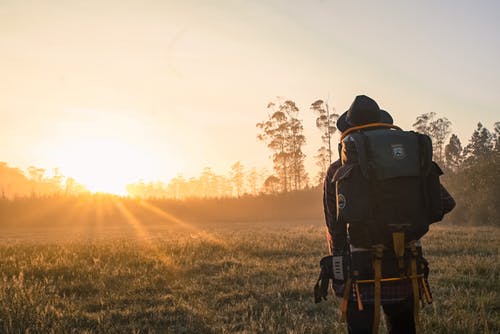
This stands for I’m Never Coming Home. This pack is the largest of the three categories and is intended for the long haul. Not only do I think of this bag in terms of I’m never coming home but also in terms of I have nowhere else specifically to go.
In essence, I will be living off of the contents of this bag indefinitely. Most likely I will not be staying in any one place for an extended amount of time but always moving about. That is why the contents of this bag need to be critically thought through.
For me, the weight of this bag is going to add up quickly. I think the minimum weight for an I.N.C.H bag is going to be 40 pounds but will easily go beyond that. One of the reasons this bag will weigh so much, is because it becomes more tool heavy than the above bags. Ho
This is why it is always important to be in good physical shape. Hauling a pack of this weight in ideal conditions over a paved surface is tiring. Hauling a pack of this weight in adverse conditions is going to be grueling. I am going to break down some of categories for this bag and my thoughts on them. There are going to be several items that carry over from the above lists but there are some differences that I will explain.
Food Requirements
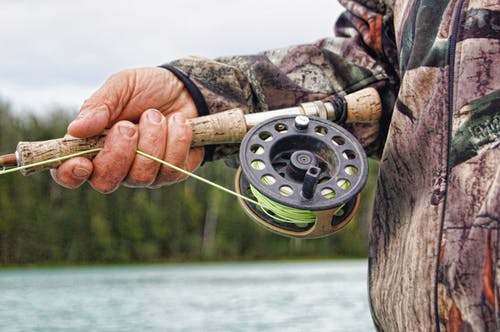
This one is going to hurt a bit, but you need to be realistic. If I am in a situation where I am using my I.N.C.H bag there is no amount of prepared food that I can carry that will see me through. It will eventually be depleted. Honestly, I would probably pack no more prepared food than I would in the 72 Hour Bag.The following are a few tools that I would find helpful in obtaining food from the environment.
- Firearm
Will provide power, distance, and accuracy when hunting for food. It will also allow the small, medium or large game to be taken. The downfall of course, is ammunition. It can be heavy, bulky, and ammunition runs out. For me, I like the .22 caliber. This platform is lightweight, and a lot of ammunition can be carried. - Bow and Arrow
Believe it or not I could see myself without a firearm in this setup but not a bow. There are a few varieties to choose from such as a compound bow, takedown bow or a crossbow. Personally, I like take down bows because they can easily be broken down for transportation. I have really enjoyed using the takedown bow by Primal Gear. - A slingshot
Yeah, I said it, a slingshot. I think this is a highly underestimated tool. I have been asked the question as to if this tool is deadly and my answer is always the same. Absolutely. Slingshots today are nothing like the old slingshots made for knocking soda cans off the fence post. Given modern ammunition and the powerful bands used, this tool is nothing to laugh at. This is why I do not consider them toys. Plus, in a pinch, ammunition can be scavenged, such as pebbles and rocks. If you were ever curious about slingshots, I suggest trying out the B52 made by Daisy. - A fishing kit
Its most basic components, fishing line, and hooks are incredibly versatile, compact, and provides for repeat business. You can expand the kit by adding weights, lures, and even a compact fishing pole. I prefer adding as many hooks and as much line as possible because the rest of the gear I can improvise in the field. - Snares
These can be bought or made beforehand. Snares are great because after being set up you can go about taking care of other businesses while they are still working. If you opt-out of packing these, they can still be made in the field by using pieces of cordage. - Wild Edibles
Knowledge of wild edibles in your region will become priceless. I don’t think people realize the amount of food that that is available by simply walking out of their front door. However, there is a problem with foraging for wild edibles.
Many people do not properly practice this skill with an experienced individual.They think by buying a field identification guide they will be good to go. Sadly, that is not the casebecause edible plants can closely resemble potentially deadly ones. Another factor to think about is whether herbicides, pesticides or other chemicals have been used in the area you are foraging.
- Cookware
This is certainly a personal choice and I am sure I will have those that greatly disagree with me on this. For my bag I will be carrying a wood stove kit. Specifically, some variation of a Kelly Kettle bundle. While it is heavier and bulkier than most, I absolutely love it. It burns biomass so fuel canisters will not need to be carried. One of its special features is a unique kettle included for boiling water. Having a small pot for boiling will ensure I get the most nutrients out of my meals. Plus, having some of the niceties such as a cup, plate, pan and pot can go a long way in relaxing at the end of the day. - Water
Like food, you will never be able to carry enough water from the beginning to get you through. Filters will be used up and purification tablets will run out. For the long term, you will have to be boiling water. This is why I prefer stainless steel water bottles over plastic ones.
Do not misunderstand me, I think filters and tablets should still be carried. But I will be saving them for circumstances in which I can’t boil water. Boiling will be my main method and tablets/filters will supplement that.
- Clothes
Clothes will be tricky as again I will not be able to carry my entire closet with me. I will most likely be carrying a minimum of two sets of extra cloths in this pack and rotating them out as needed. Remember to consider the weather in your region and be sure to add in rain gear like a poncho and rain pants. - Sunglasses
These will provide protection from bright environments and shield my eyes from foreign debris. - Gloves
I would be sure to add cold weather gloves as well as a quality pair of work gloves. - Footwear
Quality socks and shoes/boots cannot be underestimated. Walking may be your only mode of transportation so protecting your feet will become paramount.
Tool Requirements

Axe
Honestly, I like including this tool for all of the bags but due to its size and weight, I can see why some would disagree. However, for this loadout I feel a proper chopping tool is essential. Prepare for some feathers to be ruffled! Baton cutting wood with a knife for weekend work is fine and dandy if you so choose. But using this method, especially for long term use, is going to end up damaging or breaking a knife. Knives are for cutting, slicing and stabbing. Axes and its brothers and sisters are for chopping. So, make sure you have a proper chopping tool for the heavy-duty long-term tasks you will be encountering.
Wood saw
This tool is efficient and safer to use over an axe or a knife while giving precise clean cuts. Many saws today are foldable making them compact and easy to carry.
Pocket Knife
They are convenient to use for light-duty, quick tasks, like cutting a piece of cordage. One of my favorites has been the Folding Hunter made by Buck.
Fixed blade knife
Whether it be a high carbon blade or stainless steel is up to you but it should be a full tang knife. I also recommend against a blade that has any kind of black powder coating. Typically, these coatings are not food prep friendly and in a long-term situation that just isn’t healthy. If you choose a knife with a powder coating make to include a secondary uncoated knife for food preparation.
Multi-tool
I am a big fan of Swiss Army Knives and I will always carry one with me. For all around versatility I prefer the Swiss Champ. But for the long term I suggest a quality plier based multi-tool. You will need to grab, pinch, cut, modify, fix, break apart and twist more than you think you will. I find this tool to be invaluable and I have had great experiences with Leatherman and the SOG PowerLock series.
Check out the multitools we recommend.
Shovel
Much like a knife a shovel will have a multitude of purposes. Modern survival shovels even have more functions packed away into them, like a saw, pry bar, or fire starter. Trying to dig in the dirt or snow with a stick is awful so I suggest saving yourself the aggravation.
Check out the different compact shovels we recommend.
Sharpener
Having that badass survival knife or axe is great but have you thought about how you are going to keep it sharp for the long haul? This is where a sharpening stone and a metal file or two will help keep all those tools in proper working order. I prefer a double-sided sharpening stove for added versatility.
Check out the different sharpeners we recommend.
Shelter Requirements
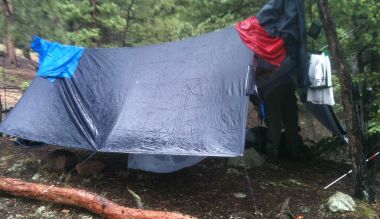
Tarp
For shelter I am going to suggest getting rid of the tent. Primarily because it can only be used as a tent. Instead I would replace the tent with a quality tarp that can have multiple uses and be set up in a variety of ways.
Bivy Sack
In order to save space, I would replace a traditional sleeping bag for a bivy sack. They are more compact and lightweight.
Cordage
I would also add in some additional cordage that can be used with the tarp or making shelter from other materials.
Navigation Requirements
Unless you feel like wandering aimless around the countryside, I suggest getting yourself some maps of the region you anticipate staying in and a quality compass. Remember, moss does not always grow on the north side of trees so knowing which way you are facing is pretty important.
First Aid Kit Requirements
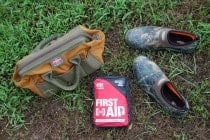
This is not something that you want to skimp on. In this situation professional medical care is not going to be available so you really need to be able to take care of yourself.
This is certainly the case where “an ounce of prevention is worth a pound of cure.” Many times, it is not the big things that get us in the wild but an accumulation of the little things. Without proper hygiene, a small scratch or cut in the wild can soon turn into an infection running up your arm. Make sure you have a good supply of the basics, such as antibiotic creams, fever reducers, pain killers, sanitary wipes and clean bandages. I would also ditch high end medical kits that are full of items most of us are not trained to use.
Personal Item Requirements
When I have seen others writing about these bags this is often a category that is left out. But I think it can play a key role in your morale and helping in setting yourself back up should the event correct itself.
Important documentation
Consider any documentation that is important to you. This can include an I.D., S.S. card, birth certificate, etc. You can carry copies on you if you prefer to have the originals left in a more secure location, like a safe. Another option would be to upload important documents onto a USB drive.
Mementos
This may sound a bit cheesy but really take a minute to consider the situation. You may never go home or if you do it is not in the foreseeable future. Having a few mementos like family photos, or an item passed onto you by a parent, just might be enough to help you through such hard times.
Entertainment
This can take many forms, but it should be an item that means something to you or grants you some form of relief or relaxation. This could be carrying a Bible, or your favorite book or even a deck of playing cards. For me I like to write, document, draw and doodle. So, a pad of paper and writing utensils are included in all of my packs.
Lastly, don’t forget items unique to you, such as an item for a health issue.
Finally, wrapping it up!
I know that I laid out a lot of information in this article but for good reason. It is important to use your critical thinking skills now in order to gather what you need before a situation is upon you. The above lists didn’t include everything you might need but hopefully it gave you a good foundation of building your own bag. How you choose your preps today will determine your outcome tomorrow. Stay prepared!

